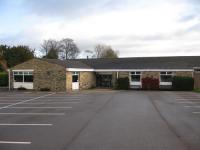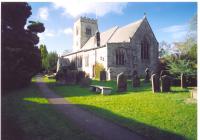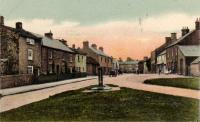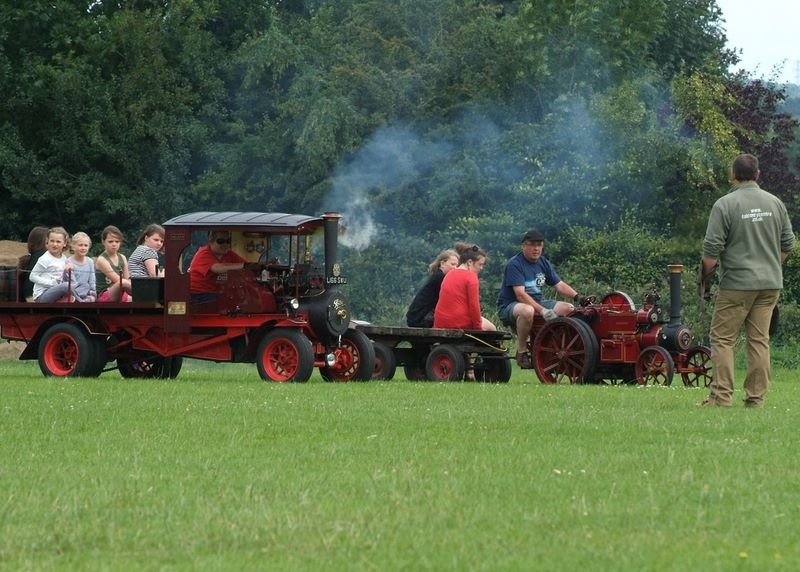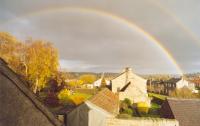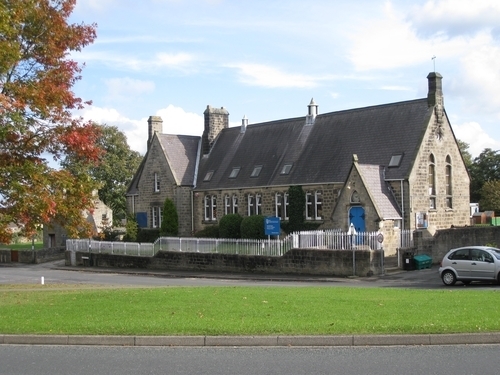Recent articles
© DT Online 2010 - 2025
| A HISTORY OF HAMPSTHWAITE - BOOK 2PLACES OF WORSHIP CONTENTS
Foreword to 'Places of Worship' More than a decade ago one of my predecessors, as Chairman of the Village Society, explained how the first book in this series ('Villagers' Reminiscences') finally reached the printing press. Now, after a series of frustrating delays it is my pleasure to welcome and introduce this second volume in the series. We have departed a little from the original plan by bringing together in this volume an account of those buildings in the village and its outskirts which have been used for public worship. Following volumes will explore the histories of our other public and domestic structures. Our thanks are due to all those who have assisted in the revival of this project and most especially, the contributors to this volume, Ian Haden, Mary Garside, Paul Parker and Lee Edinger. Additional thanks are due to Geoff Howard for his unstinting work in providing technical support and advice not merely in the preparation of this book but, above all, in the creation of the online history archive. This can be accessed on the village web site where much more information on our buildings can be found (www.hampsthwaite.org.uk). Finally, we express our gratitude to the Knabbs Ridge Wind Farm Community Fund and the Two Ridings Community Foundation for its generous contribution of a cash grant to help fund this and subsequent volumes in the series. Stuart Jennings Chairman, Hampsthwaite Village Society The Parish Church of St Thomas à Becket by Ian Haden CONTENTS
Evidence of a Saxon Church The early history of church life in Hampsthwaite is far from clear and is to some extent based on supposition. The best evidence of its existence in the 5th and 6th centuries lies in the discovery of a number of stone grave covers during the restoration of the present church in 1901. Located beneath the foundations, these were identified as Saxon or early Norman in design and workmanship. Several of them had been incised with crosses in the Celtic style. All have been preserved, the two largest standing adjacent to pillars within the church and the remainder, apart from two recently moved inside the church to prevent further erosion of the stone facing, being set in the walls of the porch. From this discovery it is feasible to deduce that a burial mound existed and that there may even have been a church made of wood on the site. If so, it would have been close to the Roman road from Aldborough to Ilkley, which crossed the nearby river and extended almost the whole length of the parish. So, who was responsible for building the first known church in the village and why was it dedicated to St. Thomas à Becket? The connection with St Thomas à Becket Thomas à Becket (1118-1170) was the son of a rich Norman merchant and was ordained by and served under Theobald, Archbishop of Canterbury. In 1155 he was appointed Chancellor of England by Henry II (1154-1189), who was increasingly concerned about the power which the church was exerting in the running of the country. To strengthen his position the king ensured that the high offices were bestowed on his supporters. Thus it came about that he made one of his knights - Hugh de Morville - Constable of Knaresborough and its castle. In an attempt to manipulate the church, Henry made his friend Becket, whom he considered more royal than Roman, Archbishop of Canterbury in 1162. From being subservient to the King, Becket set about ridding the church of its corruption. He obtained the Pope's permission to excommunicate the Archbishop of York, the Bishops of London and Salisbury and some knights. He also opposed the Constitution of Clarendon (1164), by which the King attempted to bring the clergy under the rule of the courts. This made him many enemies and he fell out with the King, who exclaimed: "Will no one rid me of this turbulent priest?" Becket was forced to flee to a Cistercian abbey in France, but he later returned to England to be reinstated by the Pope in 1170. It is not known whether the King was directly responsible for Becket's murder, but by the end of the year bitter hatred existed between them. On the night of 29th December, 1170, four knights - Hugh de Morville, Reginald Fitzpurse, William de Tracy and Richard Le Breton - entered Canterbury Cathedral and murdered Becket in the chapel of the north transept while he was kneeling in prayer. The knights had assumed that they would be pardoned by the King, but so great was the shock as word spread about the dastardly deed that Henry was forced to arrange for their capture. The manors of Aldborough and Knaresborough and the building of the first church It was in 1177 that Henry granted the Lordship of the Manors of Aldborough and Knaresborough to another of his friends, William de Stuteville, whose old and influential family had come to this country at the time of the Norman Conquest. Knaresborough Manor controlled large areas of land established by the Normans as royal hunting grounds. The Forest of Knaresborough measured some 100,000 acres and extended twenty miles from east to west. Lordship of the Manors carried the right of local jurisdiction (the 'soke') of the properties in the parishes and clearings of Hampsthwaite and Felliscliffe and extended as far west as Thornthwaite and Padside. There is actual documentary evidence in the Torre's manuscript, kept in the Library of the Dean and Chapter of York, where we find the following extract: "The chapel of Hampsthwaite as appendant (attached) to the Mother Church of Burgh (Aldborough) by composition was to pay those unto three bezants (3 gold coins) at Pentecost, by the clergy thereof presentable by William de Stuteville and his heirs." The building of the church, thus attributed to William de Stuteville, was probably completed about 1180 and was dedicated to St. Thomas à Becket by William to prove that he had no sympathy with the Archbishop's assassins. He held the patronage of Hampsthwaite until his death in 1203, when he was buried at Fountains Abbey. As he left no male heirs, the Lordship of the Manors was granted first to Hubert de Burgh and later was within the custody of the Archbishop of York. It then reverted to Henry III (1216-1272), who in 1235 granted the Lordship to his brother Richard, Earl of Cornwall. Eventually, he received the patronage from the de Stuteville family. No information has yet been found of the design or size of the first church, which may have been enlarged in the middle of the 13th century by the addition of a south aisle. Possible evidence for this is the base of the pillars which lie two and a half feet below the present floor level and which may have been used as the foundation for the later church, built about 1340-60. What we do know is that in 1257 the patronage of the church passed from the Earl of Cornwall to the Minister and Friars of the Priory of St. Robert of Knaresborough. Who was St. Robert and why should a religious order be made responsible for the clergy at Hampsthwaite? The priory of St Robert of Knaresborough In 1160 Robert Fleur was born in York, where his father was probably Lord Mayor. He showed an early interest in the monastic life when he became a novice at a Cistercian monastery near Morpeth in Northumberland. Later he left the monastery to become an itinerant monk travelling in the Dales, where he began to preach to those working on the land. Eventually, he reached Knaresborough where, in a hollow on the banks of the Nidd, he discovered a knight hiding from the King's forces. Robert was invited to stay and, when the knight moved on, he remained at his hermitage and built a chapel there. William de Stuteville regarded the friends visiting Robert as robbers and outlaws, but Robert ignored this and continued to lead a simple life, preaching and healing. His piety became known far and wide and many came to hear him preach and to receive his benediction. Even King John (1199-1216) sought his advice and is known to have made several visits to Knaresborough. In France in 1197 The Order of the Holy Trinity and of the Redemption of Captives in the Holy Land was founded and its members were known as Trinitarian Friars. With each house headed by a Minister, its aims were to preach, teach and minister to the local people and to give alms. They became drawn to the work of Robert and in 1257 the Earl of Cornwall issued a charter, giving Robert's chapel to their order. William de Stuteville continued to persecute Robert and even threatened to have him evicted. The story is told of how William had terrible apparitions in which three fearsome men were attacking him with burning rods and iron clubs. Believing this to be retribution for his cruelty to Robert, he pleaded for his life and promised to atone. He sought forgiveness from Robert, giving him land, cattle and alms for the poor. In November 1257, on the authority of the King and the Earl of Cornwall, the Archbishop of York made an order, which granted to the Ministers and Friars of the Priory of St. Robert the tithes (local taxes), garbs (clerical vestments and ornaments) and land belonging to the area. Hampsthwaite was included in this order. It was some time later, in December 1348, that a licence was granted to the Minister and Friars "to present one of their fellow brethren, expressly professed and constituted in priest's order, to the Vicarage of this church of Hampsthwaite." The only mention of Robert's canonisation is contained in the remission granted by the Pope in 1252 to all those involved in building the Priory. In it there is a reference to the body of St. Robert of Knaresborough, buried there. Rebuilding the church during the 14th and 15th centuries Rebuilding the church in 1820-21 Restoration of the church in 1901 Raising funds for the restoration The Great Bazaar Some aspects of the parish in the 18th and 19th centuries The registers A tour of the church The font The Hampsthwaite brass The Jacobean pulpit Church Panelling Church furniture Old clock face and coat of arms Memorial plaques Stained glass windows The bells and the church clock The Woodforde-Finden monument The organ Some memorial gifts Memorials to Canon and Mrs. H.J. Peck Processional cross and litany desk A walk outside the church The Lychgate and the war memorial Some interesting graves The clergy Church Community Room and Tower Room Present and future A HISTORY OF HAMPSTHWAITE - BOOK 2 PLACES OF WORSHIP |




